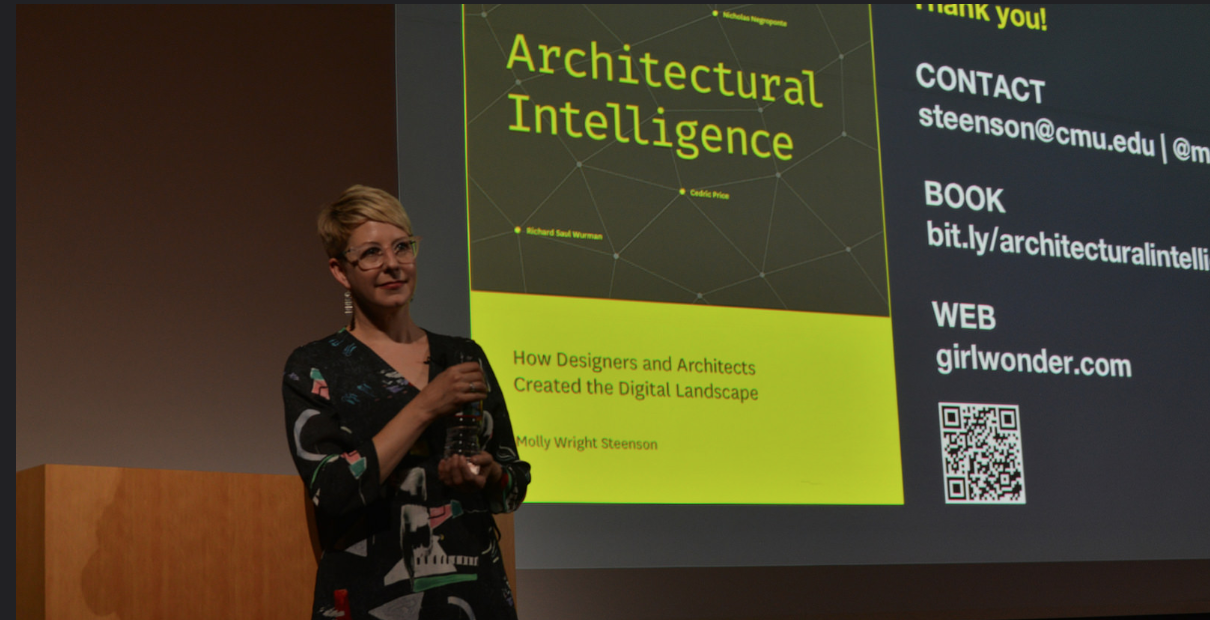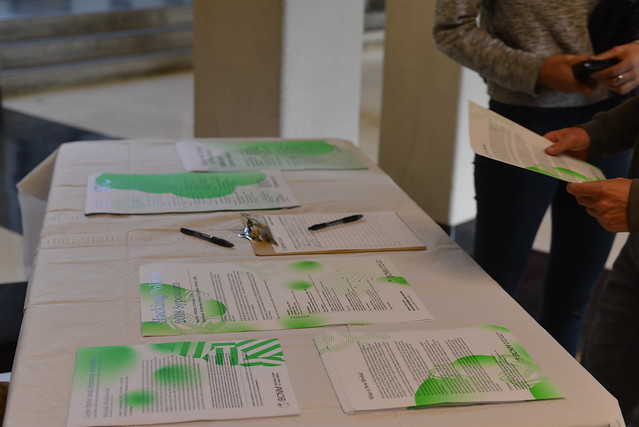Revisited: Molly Steenson

Recap by Tara Shi, 2018 - 2019 Graduate Liaison for the History Theory and New Media Lecture series
“Technology is the answer. But what is the question?”
As a closing note, Molly Steenson reasks Cedric Price’s original provocation from 1966 to think about our present-- a moment fueled by wild growth in digital technologies, like social media and machine intelligence, and an increasingly complex landscape of ethical paradigms.
For Steenson, the modern history of architecture and digital technologies are impossibly entwined. Presenting research from her latest book Architectural Intelligence: How Designers and Architects Created the Digital Landscape, Steenson carefully weaves together the contributions of 4 architects to produce a framework for thinking about today’s cultural concerns. While many claim our present is an unprecedented threshold in technological advancement, figures like Licklider and Minsky were making similar proclamations more than half a century ago. So, Steenson asks - is our moment in AI and architecture similar to before? And if so, what can we learn from past imaginations and experiments?
Steenson begins her survey with the contributions of Richard Saul Wurman, crediting him with popularizing the concept of architecture as information. By organizing the AIA conference of 1976 and through his later book Information Architects (1996), Wurman influenced the rise of a new generation of computer-oriented designers, what he called “the wave of the future”.
From here, Steenson takes a deep dive into Christopher Alexander’s work at the CED and its rippling influence in computing culture. In 1963, Alexander founded the Center for Environmental Structure at U.C. Berkeley. He was among the first architects to use a computer, a relationship that was formative to his later design theories. In his book Notes of the Synthesis of Form (1964), his proposals of design methodologies like the tree were heavily influenced by thinkers in biology, cybernetics and gestalt psychology.
Semi-lattice network methodologies evolved from tree designs and led to his most famous work the Pattern Language (1977). Produced in collaboration with CES colleagues, The Pattern Language was not only seminal to architectural thinking, but inspired computer scientists like Kent Beck and Ward Cunningham to apply these design philosophies to computing. For Steenson, Alexander defined the way that software engineers and UX designers talk about architecture. Some examples of his influence can be seen in the object oriented programming language Smalltalk-80, the seminal ‘Manifesto for Agile Software Development’ and Wards’ invention of the wiki.
Moving on, Steenson champions Cedric Price and his belief in the purpose of technology. Over his life-long practice and teaching, Price developed a vision for an interactive architecture that could ‘learn from and change visitors over time’, exemplified in his famous work with Joan Littlewood the Fun Palace (1964). Drawing from cybernetician and mentor Gordon Pask’s work, Price’s Generator (1976) was another project that propelled the idea that “technology should produce the unexpected”. Generator was an computer-mediated arts retreat in Florida composed of 12x12 cubes that were to be reorganized by its inhabitants based on use. If the computer sensed extended periods of stasis, the ‘boredom program’ would kick in and randomly generate unsolicited feedback, reorganizing the cubes as it pleased.
Similarly, Nicholas Negroponte, the 4th architect Steenson examines, also experimented with computer facilitated environments like his gerbil-machine project SEEK. Negroponte co-founded the MIT Architecture Machine Group in 1967, where he led experiments in early versions of augmented reality, artificial intelligence and gestural and voice interaction. Aspen Movie Map (1978), a google streetview like installation involving a multiple screens and an eames chair rigged with joysticks, was a notable project for setting early goals in the field. They prioritized ‘supreme usability’ in a time when computer environments were often loud and uncomfortable.
Importantly for Steenson, Negroponte equates intelligence to ethics, posing questions at large like: why ask machines to learn? It is also necessary to recognize, however, that military funding from DARPA and ONR, made the lab’s experiments possible and set a general agenda for research. For Steenson, similar complexities exist in our technological ecosystem today, with more and more users, designers, corporations, governments and machines becoming stakeholders. She is deeply critical of the trolley problem as an approach to ethics, preferring Kate Crawford’s idea of interpretability over transparency. Shoring up the theoretical and experimental contributions of thesel four architects, Steenson pushes for a genealogical understanding of our technological past as a wayfinder in an ever entangled human-machine future.

